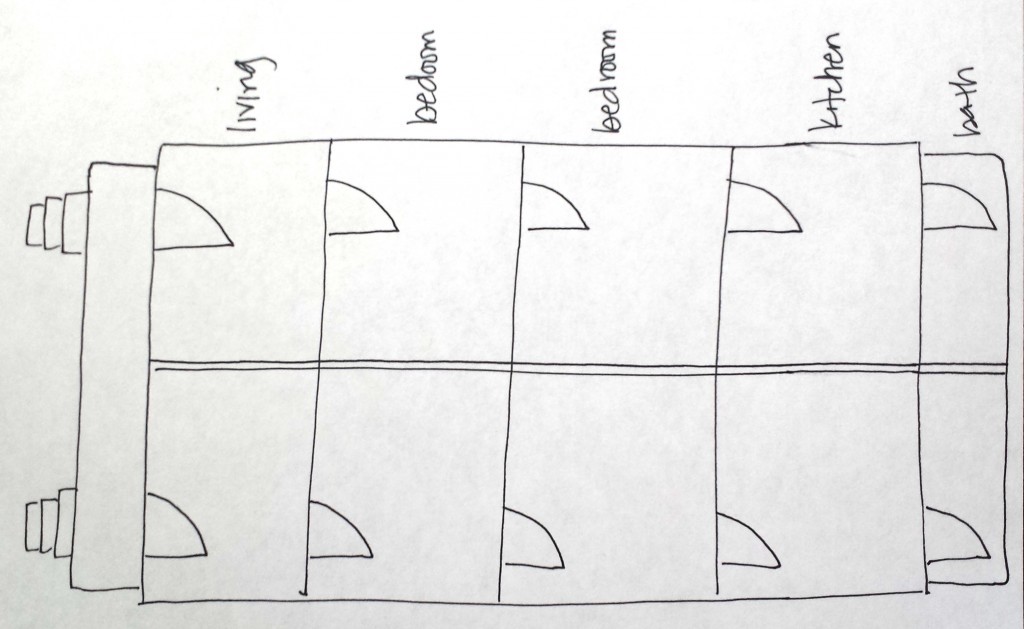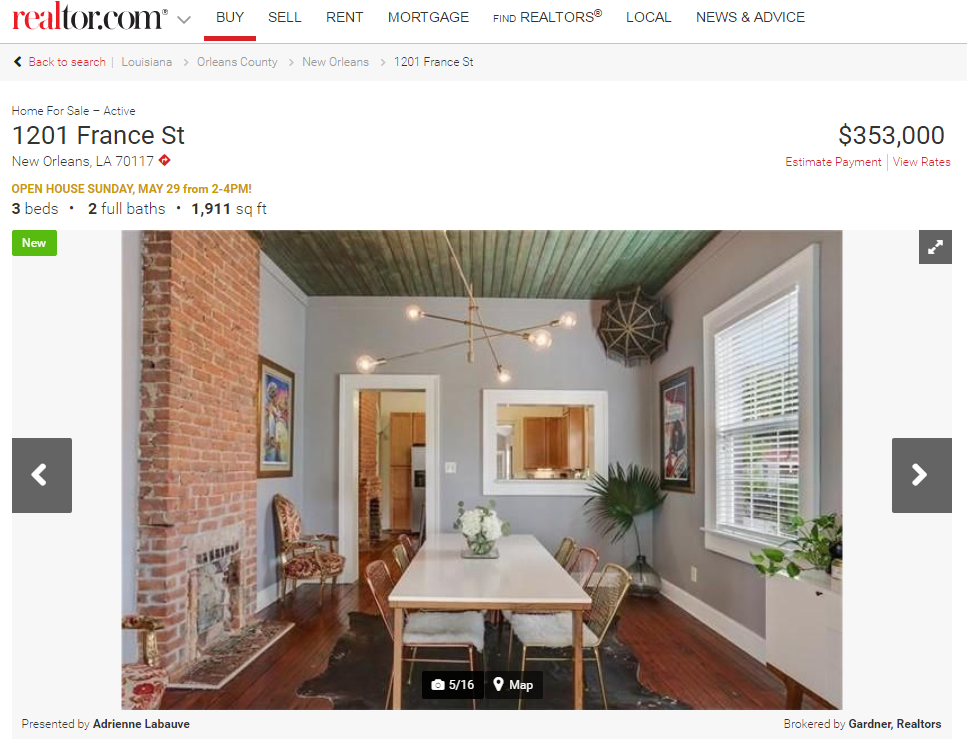Dining rooms are coming to the South.
By Lisa Wade
Students of the University of Virginia posing as house guests outside Monticello. (Photo: Hulton Archive/Getty Images)
The dining rooms are coming. It’s how I know my neighborhood is becoming aspirationally middle class.
My neighborhood is filled with “shotgun” houses. Probably from West Africa, they are designed for a hot, humid climate. The homes consist of several rooms in a row. There are no hallways (and no privacy). High ceilings collect the heat and the doorways are placed in a row to encourage a breeze to blow all the way through.
Around here, more often than not, they have been built as duplexes: two long skinny houses that share a middle wall. The kitchen is usually in the back leading to an addition that houses a small bathroom. Here’s my sketch:

As the neighborhood has been gentrifying, flippers have set their sights on these double shotguns. Instead of simply refurbishing them, though, they’ve been merging them. Duplexes are becoming larger single family homes with hallways (which substantially changes the dynamic among its residents) and makes space for dining rooms. Check out the new dining room on this flip (yikes):

At National Public Radio, Mackensie Griffin offered a quick history of dining rooms, arguing that they were unusual in the United States before the late 1700s. Families didn’t generally have enough room to set one aside strictly for dining. “Rooms and tables had multiple uses,” Griffin wrote, “and families would eat in shifts, if necessary.”
Thomas Jefferson would be one of the first Americans to have a dining room table. Monticello was built in 1772, dining room included. Wealthy families followed suit and eventually the trend trickled down to the middle classes. Correspondingly, the idea that the whole family should eat dinner together became a middle-class value, a hallmark of good parenting, and one that was structurally — that is, architecturally — elusive to the poor and working class.
The shotgun house we find throughout the South is an example of just how elusive. Built before closets, all the rooms in a traditional shotgun are technically multi-purpose: they can be used as living rooms, bedrooms, offices, dining rooms, storage, or whatever. In practice, though, medium to large and sometimes extended families live in these homes. Many residents would be lucky to have a dedicated living room; a dining room would be a luxury indeed.
But they’re coming anyway. The rejection of the traditional floor plan in these remodels — for being too small, insufficiently private, and un-dining-roomed — hints at a turn toward a richer sort of resident, one that demands a lifestyle modeled by Jefferson and made sacred by the American middle class.

||
This story originally appeared on Sociological Images, a Pacific Standard partner site, as “The Architecture of Gentrification; or, the Dining Rooms Are Coming.”





